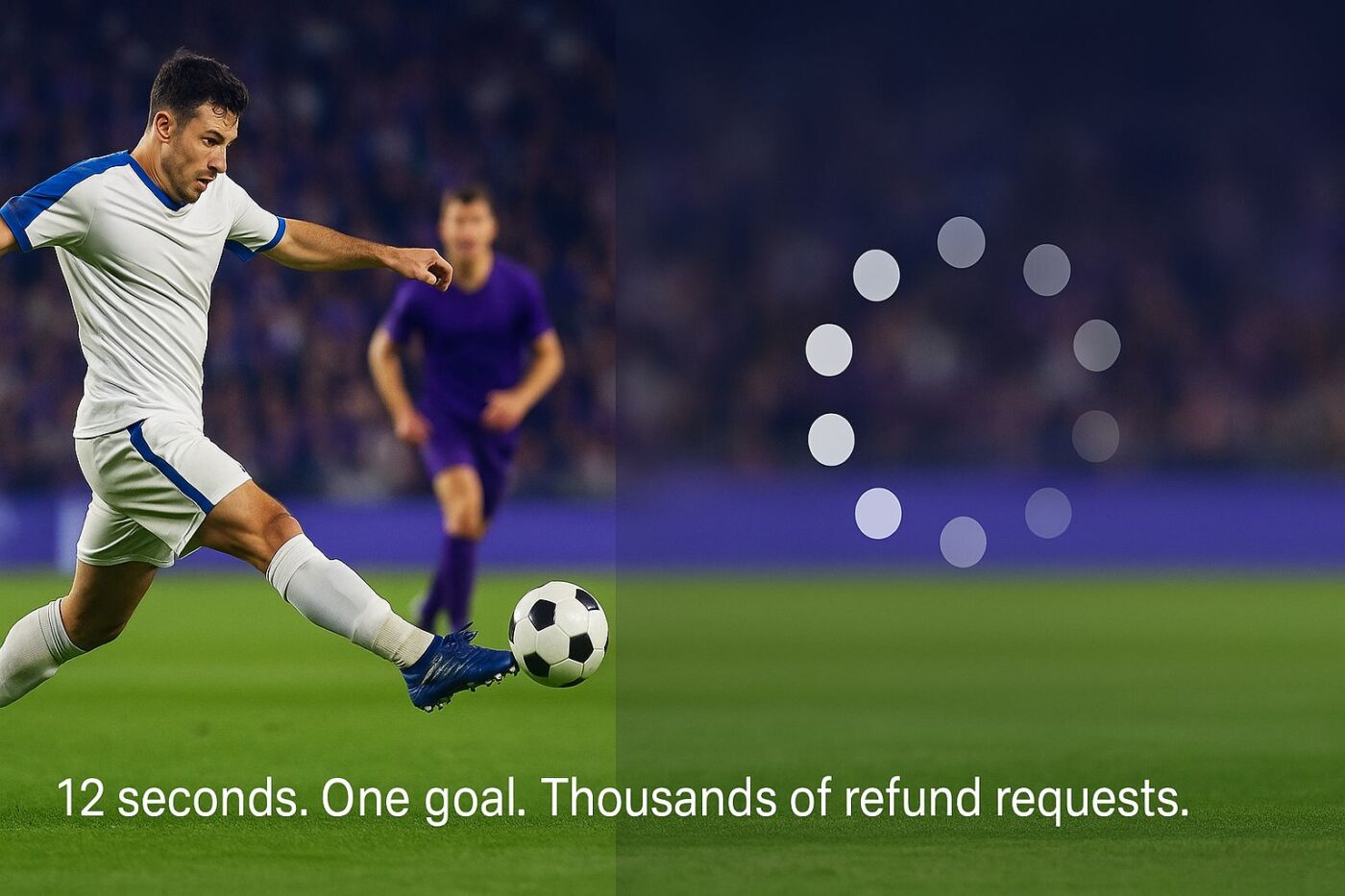Why Your SRT Streams Fail Even When “The Network Looks Fine”

“SRT: rock‑solid – right up to the moment the screen goes black.”
Sound familiar? Your NMS shows every light green, but social media is exploding with angry GIFs of spinning wheels. Why does it keep happening – and why does it always catch us off‑guard?
The Real Problem Nobody Talks About
Broadcast engineers live and die by millisecond‑level events. A 120 ms Jitter spike can trigger an SRT retransmit storm that empties decoder buffers and turns your pristine UHD feed into pixel soup. Yet most monitoring stacks poll once a minute – sometimes once every five. That’s like checking the weather hourly while sailing through a hurricane.
Field Anecdote: Anatomy of a Two‑Minute Disaster
Championship match, 2024. Encoder shows 99.9 % uptime. Eight minutes into overtime, 0.03 % packet loss sneaks through an upstream hand‑off. Within 90 s the SRT buffer hits max, ACK/NACK traffic explodes, and the stream drops for 12 s – right during the game‑winning goal. The IT team says, “The network looks fine.” Viewers disagree.
AlvaLinks’ probe found the culprit later: a micro‑burst of jitter lasting 78 ms on a supposedly “diverse” path. Traditional tools never saw it; their sample resolution was too coarse.
Invisible Enemies Inside SRT
1. Micro‑burst Jitter
Jitter <75 ms is invisible at 60 s resolution but lethal to low‑latency SRT.
2. Asymmetric Route Changes
Route keeps changing impacts the Latency, jitter and RTT for any SRT stream
3. Retransmit Storms
SRT’s ARQ saves packets – until it floods the link with resends.
4. Buffer Creep
A steady rise in latency that eats margin without raising an alarm.
Each of these happens in milliseconds. Miss them and you’ll be troubleshooting well into the rerun.
Why Traditional Monitoring Misses the Crash
| Classic IT Metric | Broadcast Reality |
| ICMP ping every 60 s | Misses 99.998 % of events that break video |
| 5 % packet‑loss alert | Viewers complain at 0.05 % |
| SNMP interface errors | Tells you nothing about SRT retransmits |
| Synthetic HTTP checks | Great for websites, useless for packets in flight |
Most NMS platforms sample at 30–60 s. High‑resolution sampling – 10 ms or better – turns those blind minutes into legible data. You can’t fix what you don’t see.
High‑Resolution Sampling: The Unsung Hero
High‑resolution sampling isn’t just more data. It’s a different universe:
- Thousands samples per second vs. 1 per minute – a detail boost
- Correlates SRT internal stats (Bitrate, Jitter, ACKs, RTT, drop‑dup counts) with actual packet captures
- Feeds AI models enough context to predict trouble, not merely record it
Without that granularity, AI is guessing. With it, AI becomes a network fortune‑teller.
The Business Cost of a Ten‑Second Black Screen
Let’s do the math:
- Ad break CPM: $22 (sports, U.S.)
- Audience: 1.2 M concurrent
- Ten‑second outage = 2/3 of a 30‑s spot lost
Revenue hit: $17,600 – per break, per channel.
Now factor in brand damage, SLA penalties, and social‑media blowback. Cheap circuits suddenly look very expensive.
How AlvaLinks Fixes the “Everything’s Green” Lie
- Millisecond‑resolution probes track SRT flow on one end.
- AI model (ADI) Start with a score and identify 100+ metrics: jitter bursts, retransmit ratios, buffer curves.
- Route tracing continuously track the route hop performance for better event correlation
- Real‑time scoring flags a rising risk before viewers feel it.
- Unified dashboard bridges IT and broadcast teams – no more finger‑pointing.
Result: you solve problems during rehearsal, not on Twitter.
Which Metric Do You Trust?
If the network looks fine but the picture isn’t, whose side are you on – the dashboard or the viewer? High‑resolution sampling turns “I think” into “I know,” and that’s the difference between overtime glory and a thousand refund requests.
Curious what a millisecond‑level probe would reveal in your workflow? [Book a 15‑minute live test].
FAQ: SRT Stream Failures (Structured Data Ready)
What is the most common cause of SRT stream failures?
A network change is the main reason for SRT failure. A network change can cause a sudden packet loss, spike in latency or jitter that triggers retransmit storms or buffer overflow. These are faster than standard monitoring can detect.
How granular should my sampling be to catch SRT issues?
Aim for 10 ms or finer. Minute‑level polling misses the millisecond‑level events that disrupt video.
Can high‑resolution sampling overload my network?
No. Modern probes compress and export only statistical deltas, adding less than 0.1 % overhead.
Ready to prevent stream failures before they happen? Book a demo and start broadcasting with confidence.